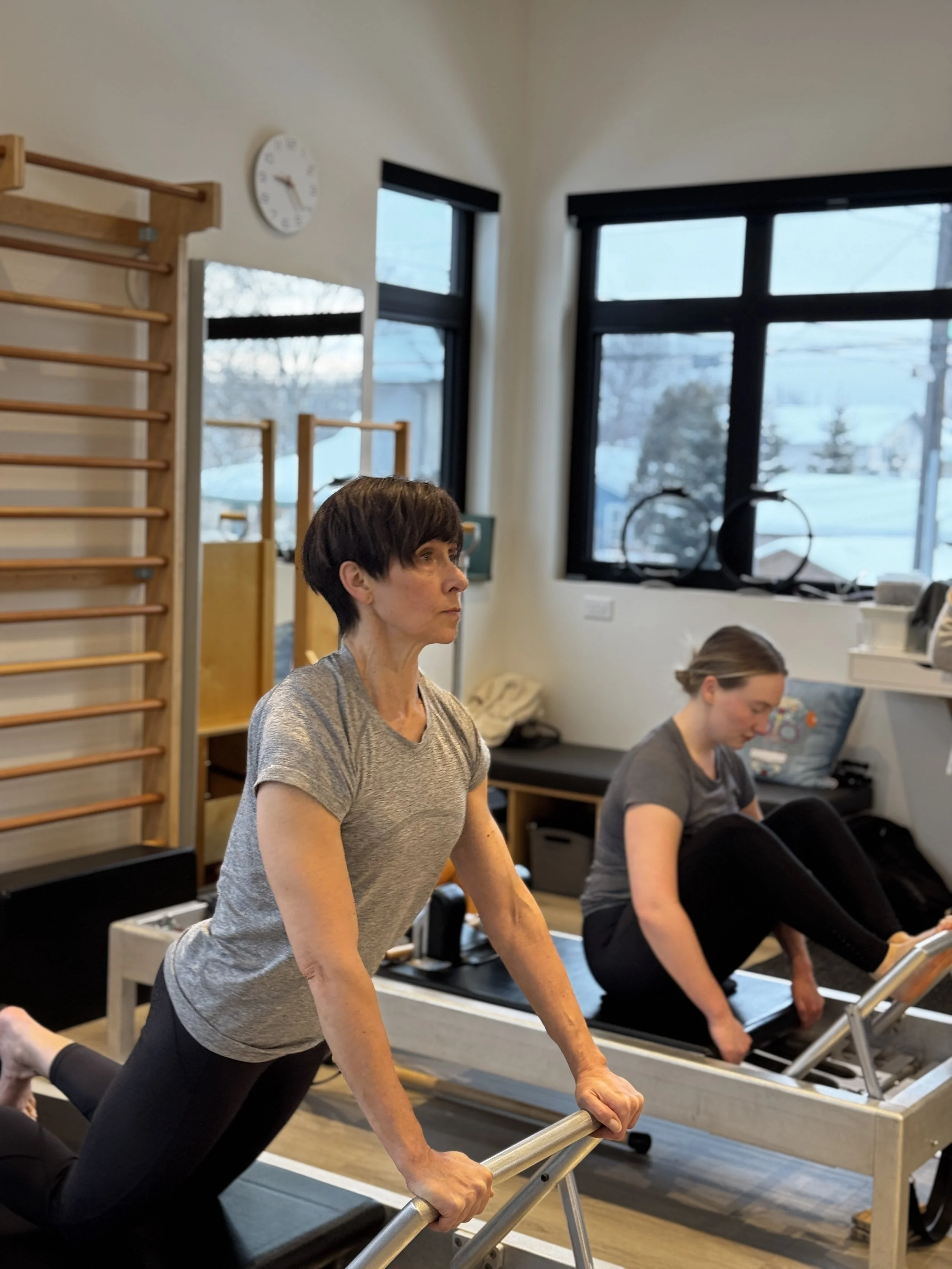WHAT IS Pilates?
Pilates comes from the man’s last name who invented a method of corrective exercise called Contrology. Joseph Pilates developed a series of exercises with corresponding apparatus that when practiced several times a week improves one’s strength, flexibility, balance, control and improves posture.
1. Improve core strength: Contrology is known for its focus on developing a strong and stable torso. The exercises target the deep muscles of the abdomen, the back, the sides of the torso and hips, which can help improve your posture and reduce back pain.
2. Healthy joints: Contrology involves learning to use the correct muscles for healthier joint movement, reducing the risk of injury and enhancing athletic performance.
3. Improve balance: Contrology exercises challenge the body’s ability to find better alignment, which helps to improve balance and stability.
4. Reduce stress: Contrology incorporates breathing in a normal calm way and movement that is not done hastily. A sense of calmness in the body ultimately helps to reduce stress promoting relaxation, which is especially helpful for mental health.
5. Better posture: Contrology strengthens the muscles that support the spine, improving posture and reducing the risk of developing pain in other parts of the body.
WhY Call “Pilates” CONTROLOGY?
Respecting Joseph Pilates’ lifework, we are practicing CONTROLOGY.
These days, there are many iterations of Joseph Pilates' work, and at Aligned Pilates you learn how to practice Contrology. Mr. Pilates was firm in his instructions and by repetition of his exercises, a person will gradually and progressively develop a strong and vital body for this day and age. A consistent practice of Contrology develops a natural organic rhythm and coordination within the body to the point where the movement becomes seemingly second nature. We realize the movement is not forced, but strong with a sense of ease—learning to move efficiently and avoid pain is one of the by product of our hard work.
Joseph Pilates believed that the body would RETURN TO LIFE through his exercise method.
